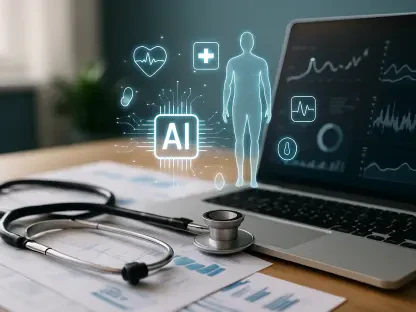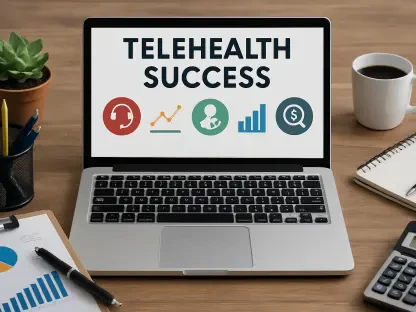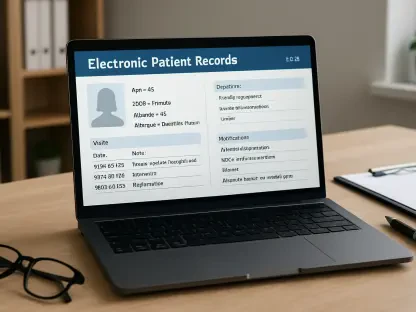The healthcare industry has recently witnessed a significant data breach at Episource, affecting approximately 5.4 million individuals’ sensitive information. Reported to federal regulators, this breach stands out as one of the largest within the healthcare sector this year, second only to a breach at Yale New Haven Health System that exposed 5.6 million patients’ data. The gravity of this incident is underscored by the escalating trend in data breaches driven by cybercriminal activities such as hacking and ransomware attacks, which continue to pose substantial risks to patient data security. Episource encountered unusual system activity in February, leading to the discovery that a cybercriminal had accessed and stolen data, including contact details, health insurance information, medical records, and sensitive personal information like Social Security numbers and birth dates.
The Rising Threat of Cybercrime in Healthcare
Analyzing the current trend, the increasing frequency and scale of healthcare data breaches reveal a mounting vulnerability due in part to the sector’s growing reliance on digital systems and data sharing. Sophisticated cyber threats significantly amplify the risks linked to data management. Ransomware attacks, particularly, present acute challenges by denying user access to data until a ransom is paid. These types of attacks further complicate an already precarious landscape of healthcare IT security. The impact of these breaches is broad, affecting not all but a substantial number of customers, as seen in Episource’s breach, which notably impacted customers such as Sharp Healthcare in San Diego. Sharp reported the breach affected over 26,000 individuals under its services. This selective nature of breaches indicates the pervasive yet unpredictable challenges posed by cyber threats.
Ineffectiveness of Current Cybersecurity Measures
A prominent theme emerging from the Episource breach is the inadequacy of current cybersecurity measures within healthcare organizations to counter increasingly sophisticated cyber threats effectively. Last year’s record-breaking ransomware attack on UnitedHealth’s subsidiary Change Healthcare, which impacted 190 million individuals, illustrates the alarming scale these incidents can reach. The ongoing discourse suggests that healthcare entities must enhance their defenses to protect sensitive patient information better. Moreover, breaches within the same timeframe, such as Blue Shield of California’s incident affecting 4.7 million individuals, highlight vulnerabilities involved in third-party data management. This breach was linked to Google Analytics sharing member data with Google Ads, exposing complexities in external partnerships and data-sharing agreements.
Urgency for Enhanced Cybersecurity Frameworks
Synthesizing information across these incidents suggests a pressing need for healthcare organizations to prioritize the development of enhanced cybersecurity frameworks. Robust incident response strategies are crucial to minimizing potential damage. Different perspectives captured in the discussions reflect a unified understanding that healthcare establishments must transition from a reactive to a proactive stance toward cyber threats. While large-scale breaches are not everyday occurrences, there is a concerning rise in both their frequency and the sheer volume of data compromised. This pattern exemplifies not only individual firms’ shortcomings but also signals a broader systemic issue within healthcare IT practices. Consequently, healthcare organizations must emphasize data encryption, train staff on regular cybersecurity standards, and invest in advanced threat detection technologies.
Moving Forward: Necessary Reforms and Vigilance
The detailed and objective examination of the Episource incident and wider healthcare data breaches within the current year highlights an urgent necessity for infrastructural and policy-driven changes to manage the risks more effectively. Implementing comprehensive security protocols and fostering a culture of vigilance among healthcare providers and their partners is imperative to adequately protect patient data and maintain trust within the industry. Stakeholders ought to focus efforts on expediting improvements in cybersecurity policies, ensuring that the healthcare sector moves toward fortified defenses against the growing wave of cyber threats. Although steps have been made toward enhancing cybersecurity, the path to insulating the industry from increasing threats remains long, requiring continued diligence and decisive action to secure sensitive patient information effectively.









